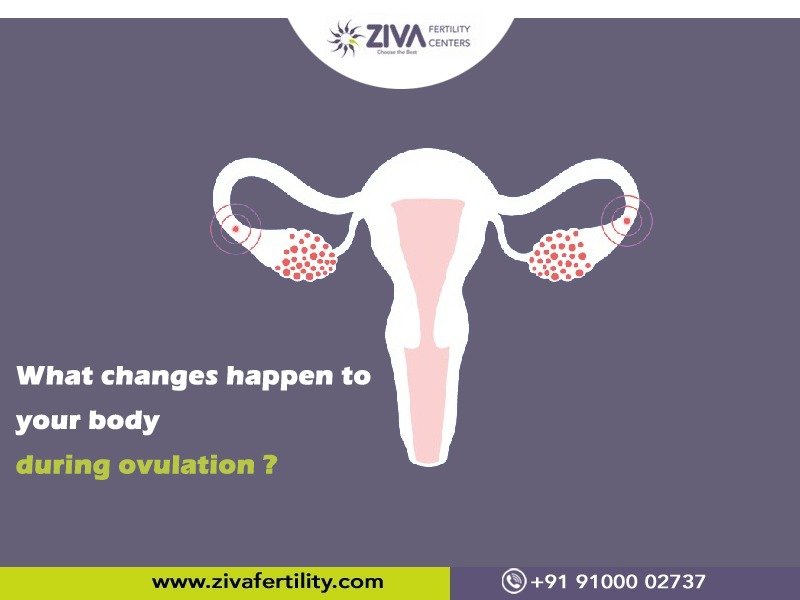Ovulation is a monthly process where the hormonal changes signal the ovaries to release a mature egg. The ovulation window is during the middle of your menstrual cycle, but it can occur more than once a month or not at all. Reproductive hormones stimulate the ovulation process. Ovulation is a crucial part of fertility. During ovulation, the ovaries release the egg and travel through the fallopian tubes, fertilised by sperm released during intercourse.
Ovulation process

The ovulation window is in the middle of your menstrual cycle and happens after the follicular phase and about 2 weeks before your period starts. The follicular phase begins when the egg-containing pods ripen, resulting in a mature egg.
Not everyone starts around the same time frame, and it can vary from month to month. Ideally, the ovulation should begin about 2 weeks before the start of your period.
Ovulation doesn’t need to happen only once; it can happen more than once a month. In some cases, it does not occur at all, despite regular menstruation. Such issues are more complex to know outwardly without a medical intervention.
What changes happen to your body during ovulation?

Hormonal changes: The luteinizing hormone (LH) rises, known as LH surge. The LH surge causes the follicle to swell and rupture, which causes the egg to release and travel through the fallopian tube.
Ovulation pain and burning sensation: This is called mittelschmerz, where there is slight pelvic discomfort or mild cramps before or during ovulation. The pelvic discomfort may be caused by the rupturing of the follicle and the release of tiny amounts of blood or fluid. Females experience this as a twinge or pop, and it can be felt in either ovary and may vary in location and intensity from month to month. The pain can switch sides of their body each month, but it’s a myth that your ovaries take turns releasing eggs. The discomfort can vary from only a few moments to more extended periods.
A fluid is released from the follicle when the egg is expelled, which might cause a burning sensation or irritation in some of the abdominal lining or surrounding area. These sensations are accompanied by heaviness in the lower abdomen.
Changes in body temperature: During ovulation, progesterone hormone is secreted, which raises the basal body temperature (BBT) by about 1°F or less during the 24-hour window after ovulation occurs. In case of no fertilisation, your BBT will remain raised until your period starts. One of the best ways to know about your ovulation pattern from month to month is to track your BBT. Tracking BBT is not a foolproof method, but consistently measuring for a few months should help you observe a pattern. BBT charting does not work in women who have even slightly irregular periods.
Changes in cervical mucus: Cervical mucus is primarily water and its consistency changes during your fertile window due to changes in oestrogen and progesterone levels during ovulation. So, observing the cervical mucus viscosity may provide clues about ovulation and help determine the perfect time for intercourse.
During the fertile window, this nutrient-rich, slippery fluid volume increases, and it is much thinner, stretchier, and transparent in colour. The consistency of the cervical mucus during this time is often compared to an egg white. The mucus discharge is also more in the leading up to ovulation. During the most fertile window, the cervical mucus keeps the sperm alive for 3 to 5 days. The mucus is also a lubrication for intercourse. Observing the underwear liner is the best way to check the consistency of cervical mucus.
Changes in saliva: Changes in the oestrogen and progesterone levels can alter the consistency of dried saliva, causing crystal or fern-shaped patterns to form. But these changes are difficult to see since eating, drinking, and brushing teeth can all mask these patterns.
Other expected changes are:
Tender breasts: Most women experience breast tenderness or sore nipples around the time of ovulation.
Bloating: Either before or during ovulation, bloating is common. However, not all bloating means ovulation since it also occurs during menstruation.
Ovulation and Fertility relation
The ovulation phase lasts between 16 and 32 hours, starting with the LH surge and ending when the egg is released. One is fertile before and after ovulation, which is commonly referred to as the fertility window. The window starts up to 4 days before ovulation and extends for 1 day after ovulation, and the most fertile days are the day before ovulation and the day of ovulation.
Predicting and tracking ovulation
To track ovulation, try to keep a record of the following information:
- The menstruation dates
- Volume and consistencies of your menstrual blood and cervical mucus
- The basal body temperatures
- Note the physical changes, such as cramps, pain, bloating, or breast tenderness, your moods, libido, and energy levels.
- Fertility charts mean you plot your morning temperature readings on a graph, providing a handy visual of the rise in your BBT after ovulation.
- Use any apps that help you determine when you’re most likely to be fertile.
- Ovulation home tests.
For anyone who wants to get pregnant, ovulation tracking is essential. Knowing the ovulation dates helps plan your intercourse. The fertility window is determined based on the ovulation dates. We at ZIVA Fertility Clinics can teach you how to choose the ovulation windows. Sometimes, it is straightforward, such as physical signs or medical intervention may be needed. For more information, please visit our website https://zivafertility.com/ or contact us at +91-9100002737 or +91-9392834024.
















